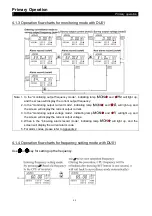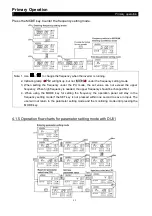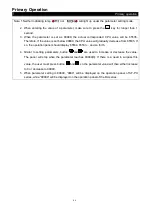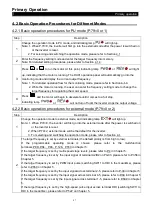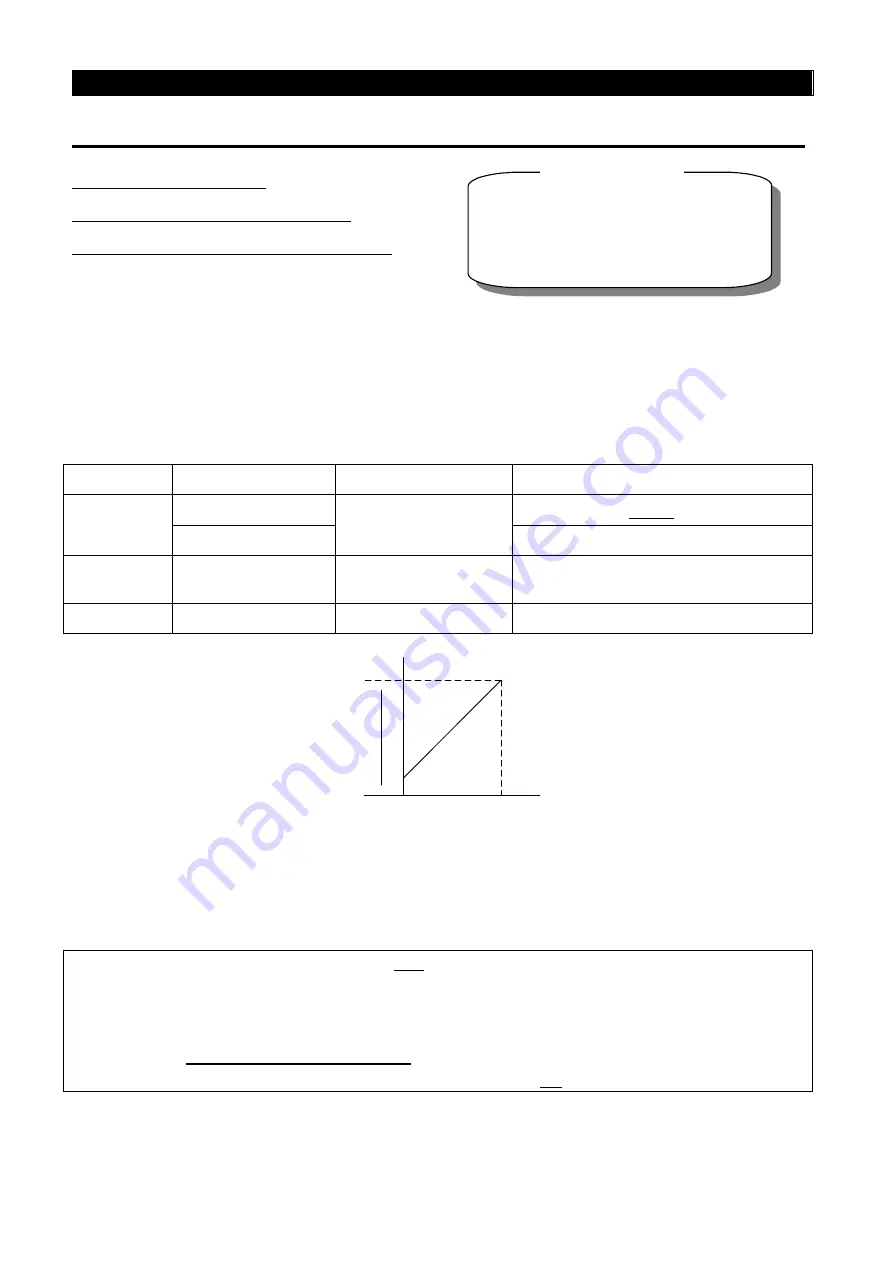
Parameter Description
Parameters
58
5.3 Base Frequency and Base Frequency Voltage (P.3, P.19 and P.47)
P.3 “Base frequency”
P.19 “Base frequency voltage”
P.47 "The second base frequency"
Related parameters
P. 80~P 84 , P.86, P. 126 P.550
P. 189
“
Factory setting function
”
P. 14
“
Load pattern selection
”
“
Multi-function terminals selection
”
● The maximal output voltage of the inverter is called “base frequency voltage”.
● If the output frequency is lower than the base frequency, the output voltage of the inverter
will increase with output frequency. If the output frequency has reached the base
frequency (P.3/P.47), the output voltage will just be equal to the base frequency voltage. If
the output frequency exceeds the base frequency and increase continuously, the output
voltage will be clamped to the base frequency voltage.
Parameter
Factory setting
Setting range
Remarks
3
50Hz
0~650Hz
60Hz
P.189=0
19
99999
0~1000V, 99999
99999: Change according to the
power source voltage
47
99999
0~650Hz, 99999
99999: Function invalid
P.3(P.47)
Output
frequency
Output voltage
(
V
)
P.19
<Setting>
• Use P.3 and P.47 to set up the base frequency.
• If RT is on, P.47 “The Second Base Frequency” is valid.(Note 1)
• Set up the base frequency voltage using P.19.(Note 2)
Note: 1. The second function is valid on when P.44
≠99999.
2. If P.19=99999, the maximum output voltage of the inverter will depend on the value of the power
supply voltage.
3. RT mentioned in this section is the function name of the “multi-function control terminal”. Please
refer to P.80~P.84
P.550 for function selection and purposes of the multi-function
control terminal. For related wiring, please refer to Section 3.5.

